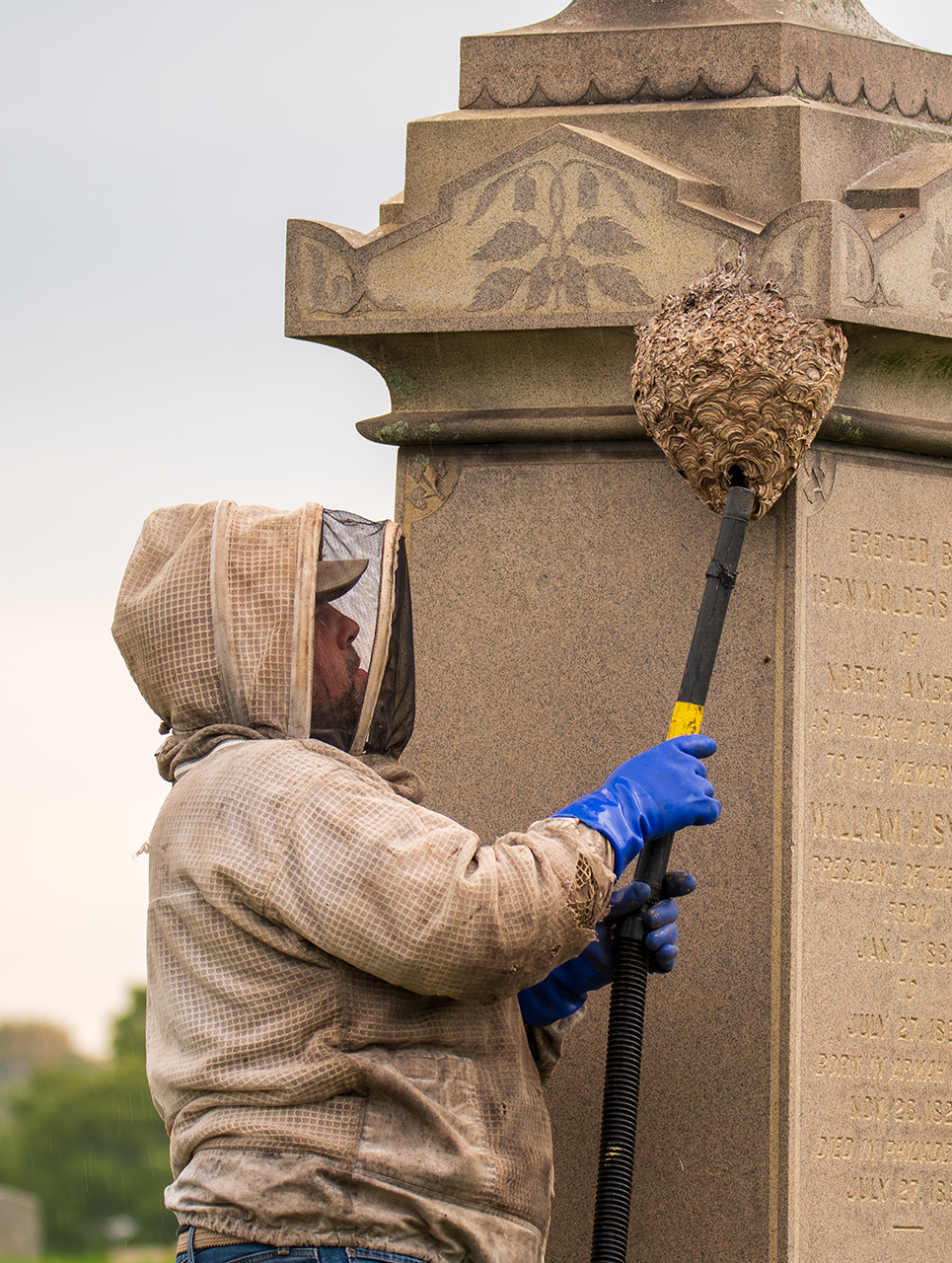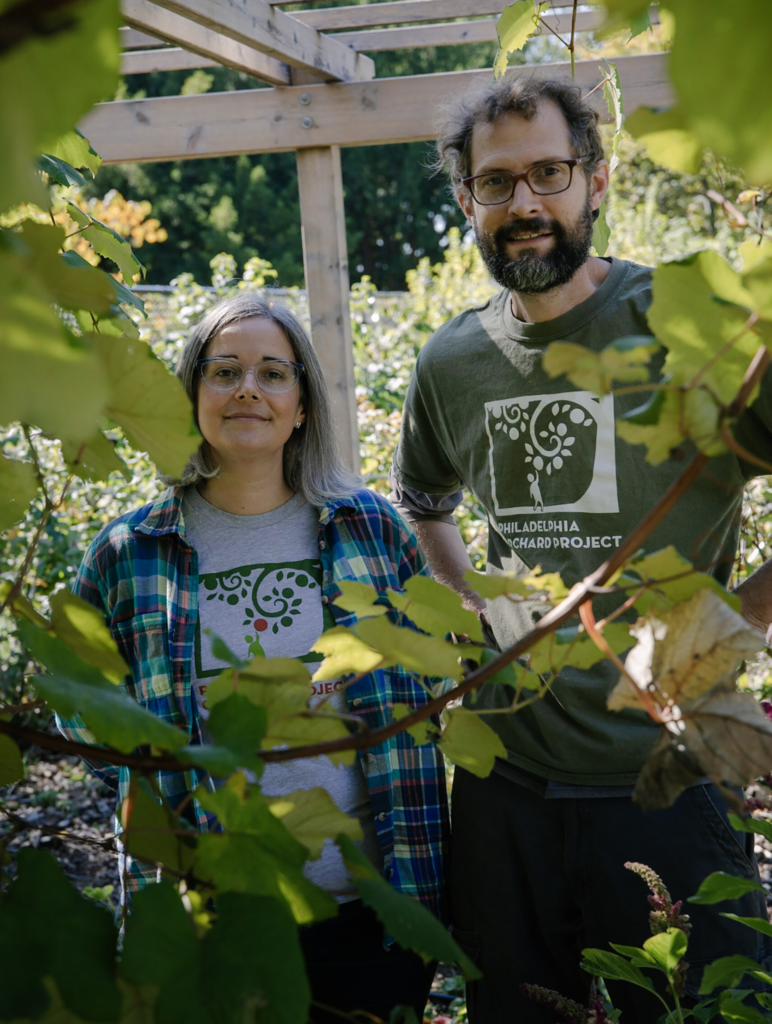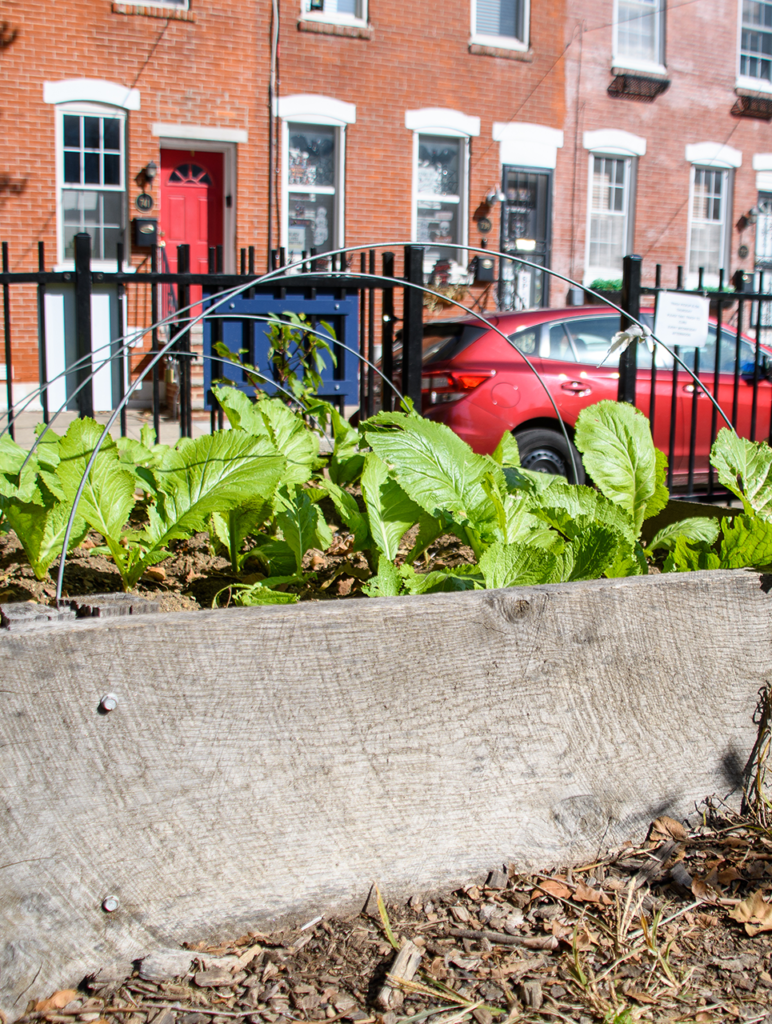As Don Shump, the owner of the Philadelphia Bee Company, prepares to move a bald-faced hornet nest from the side of a large grave marker at Fernwood Cemetery in Lansdowne, he offers some advice. “These girls tend to run and gun. So when they’re mad, they tend to hit you and spin back off for another pass,” he says. “So if one gets on you and if you can crush it, that’s the way to deal with it: crush and chuck.”
Bees and wasps punish bravado and stupidity with equal fervor, so it’s best not to be brave and stupid.”
don shump, owner of the Philadelphia Bee Company
I don’t entirely trust my crushing and chucking skills, so, along with Grid photographer Troy Bynum, I back up to about 25 yards from the nest. “Bees and wasps punish bravado and stupidity with equal fervor, so it’s best not to be brave and stupid,” Shump says. Troy and I are content to be cowardly and smart.
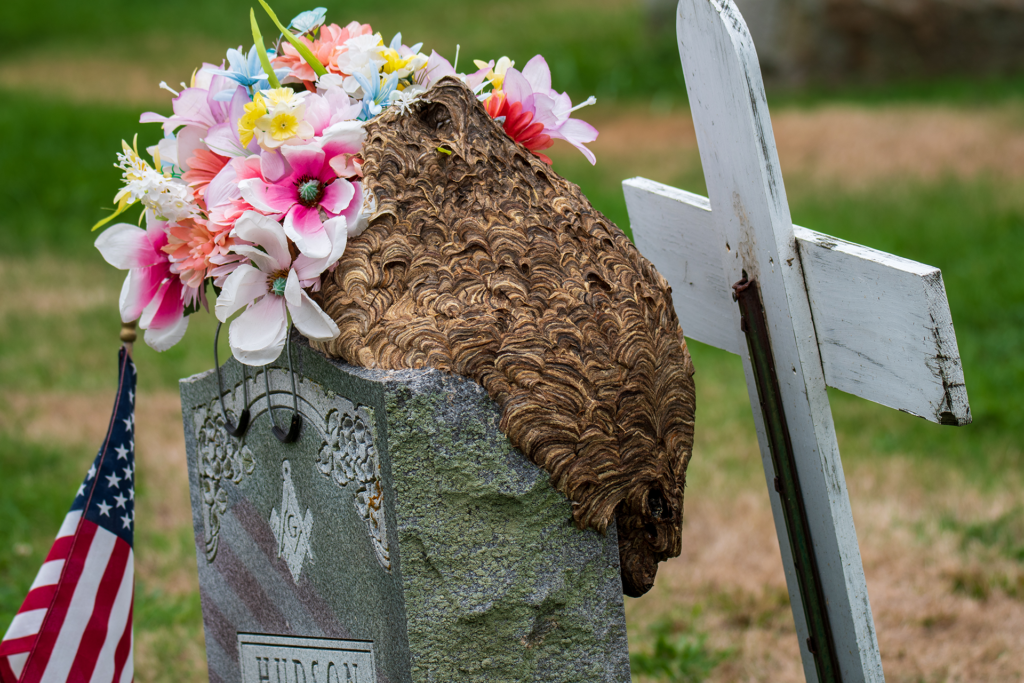
Bald-faced hornets are black wasps with white on the end of their abdomens and —no surprise — their heads. More closely related to yellowjackets than to the true hornets of Europe and Asia, they build inverted-tear-shaped nests out of wood that they chew up and then spit back out as pulp, laying down rows of curves that, thanks to the variety of woods used as material, end up as varied stripes that camouflage the nest. They often build these nests high up in trees or stuck to the sides of buildings. The workers spend their days hunting insect prey that they then feed to the larvae growing in the cells of the nest. Bald-faced hornets are pretty mellow as far as wasps go, assuming you don’t get too close to the nest.
Shump stands right next to the basketball-sized nest and knocks on it with one gloved hand to get the workers excited. He is shielded by a padded beekeeper jacket with a hood and netting over his face and armed with a vacuum cleaner. Shump then sucks the wasps up with the vacuum’s wand attachment as they emerge to do battle. A few workers zip past our heads, but Troy and I manage to avoid any stings.
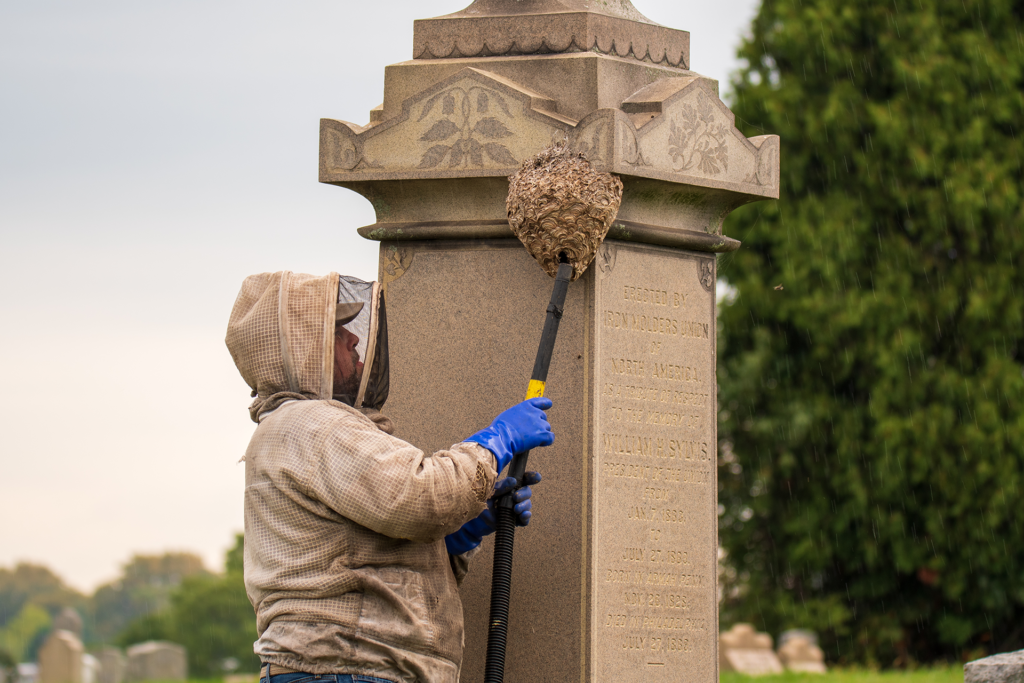
Shump got into the wasp removal business (he removes “anything that flies and stings”) as an addition to the Philadelphia Bee Company’s honeybee hive removal service. “Originally I had started off doing the honeybee side, and we didn’t do the wasps,” Shump says. Property owners who called the company for help couldn’t always tell the difference between honeybees and other flying, stinging wasps. “I felt bad telling people, ‘Those are wasps — I can’t do anything.’ So we started doing wasp removals.”
Shump’s passion for honeybees soon grew to encompass their relatives. In Philadelphia there are at least 150 species of wild bees, along with many times more species of other wasps (technically speaking, bees are wasps).
Shump’s face lights up as he talks about a rare species of cuckoo bee, Nomada sphaerogaster (lots of insects don’t have common names and are known by their scientific names) reported in Riverton, New Jersey. While most bee species visit flowers to collect pollen and nectar to feed their larvae, cuckoo bees instead lay eggs in other bees’ nests. Their offspring steal the other bees’ provisions. This means you can’t find them by sitting and watching flowers. “I’ve been looking for that one for seven years now,” Shump says.
Only honey-bees produce honey, though, and the Philadelphia Bee Company keeps more than 100 hives around the city. Shump originally got into beekeeping as a break from working as a web designer. The hobby grew into a profession, leading him to incorporate the Philadelphia Bee Company in 2012.
The company sells seasonal and varietal honeys through its website and at popup events like the Christmas Village near City Hall. Shump talks about honey like a sommelier talks about wine, combining descriptions of the honey batches with accounts of the plants and weather that yield their characteristics. “Fairmount Park spring this year was almost certainly black locust: water-white, gorgeous!” Shump says. “You only get that every two years or so because the blooms are so sensitive.”
“Our Old City fall from 2016 was black as pitch. We got 12 pounds of the really dark stuff. I didn’t sell any of it,” Shump says. “I gave a few jars to the building owners [of the properties at which the hives were placed] and I took it to honey tastings. People said, ‘Where can we buy it?’ and I said, ‘You can’t! It’s all mine!’”
Not all honey comes from flowers. Insects that suck up plant sap need to vent sugary liquid, called honeydew, as they feed. Bees sometimes gather the honeydew and make honey out of it. The company’s summer Doom Bloom varietal is produced by bees from spotted lanternfly honeydew. “I walked into my honey house five years ago and I asked the guys, ‘Who’s eating maple bacon?’ because that’s what it smelled like,” Shump says.
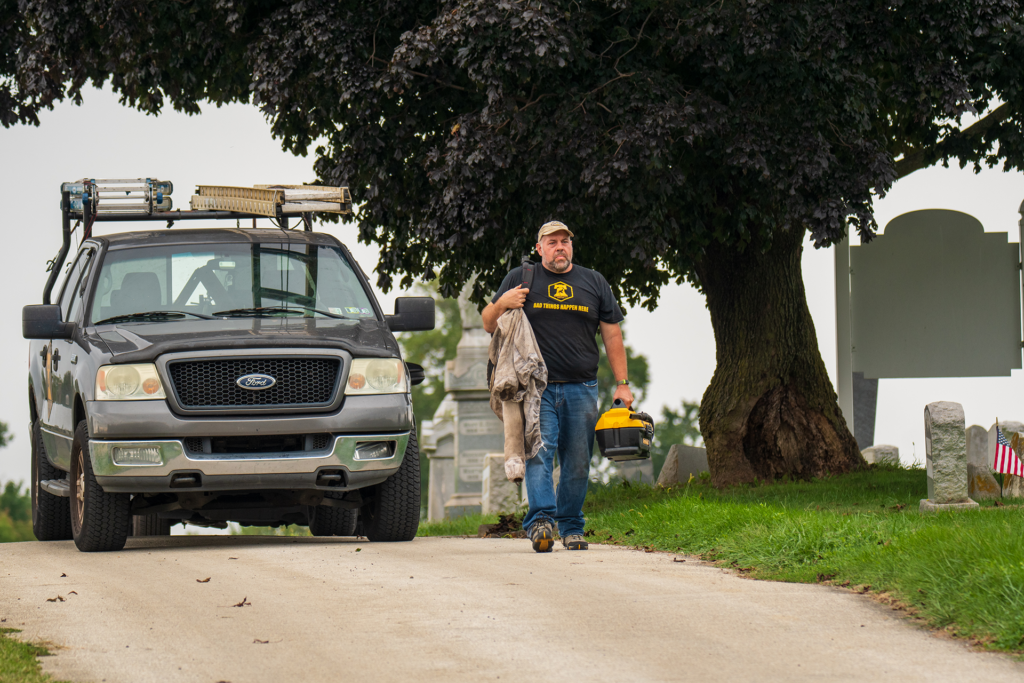
With most of the workers inside the vacuum, Shump cuts the bald-faced hornet nest apart and puts the core of it, its cells packed with larvae, into a large Ziploc bag for disposal. While feral bee hives that Shump removes can be converted to honey production, wasps can’t be relocated. Shump has mixed feelings about killing the creatures he loves, but he understands that most people, including cemetery managers concerned for the safety of visitors, might not want them around. “I recognize my feelings on stinging insects are not what one would consider normal,” he says. “There is nothing wrong with having a healthy respect for stinging insects.”


